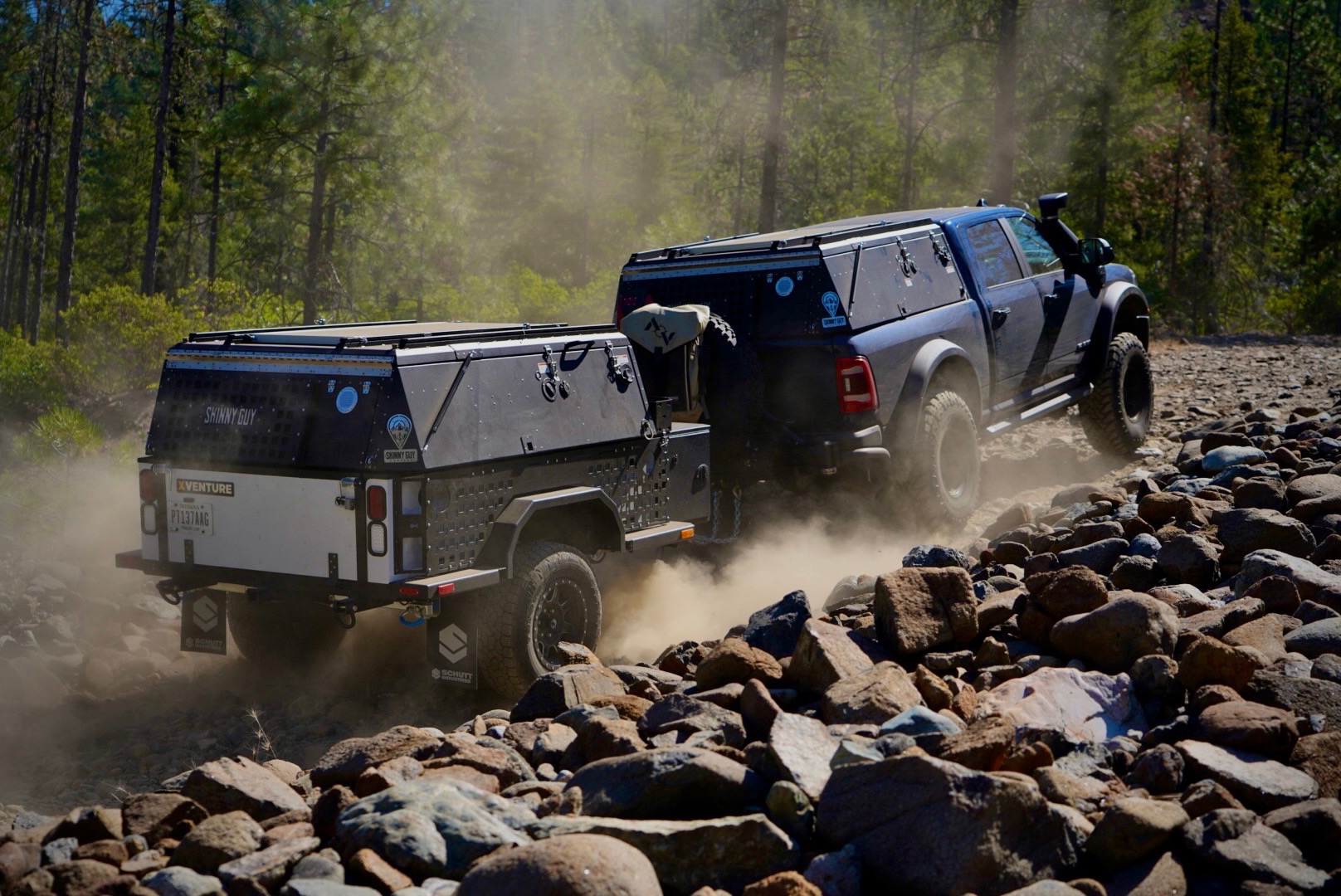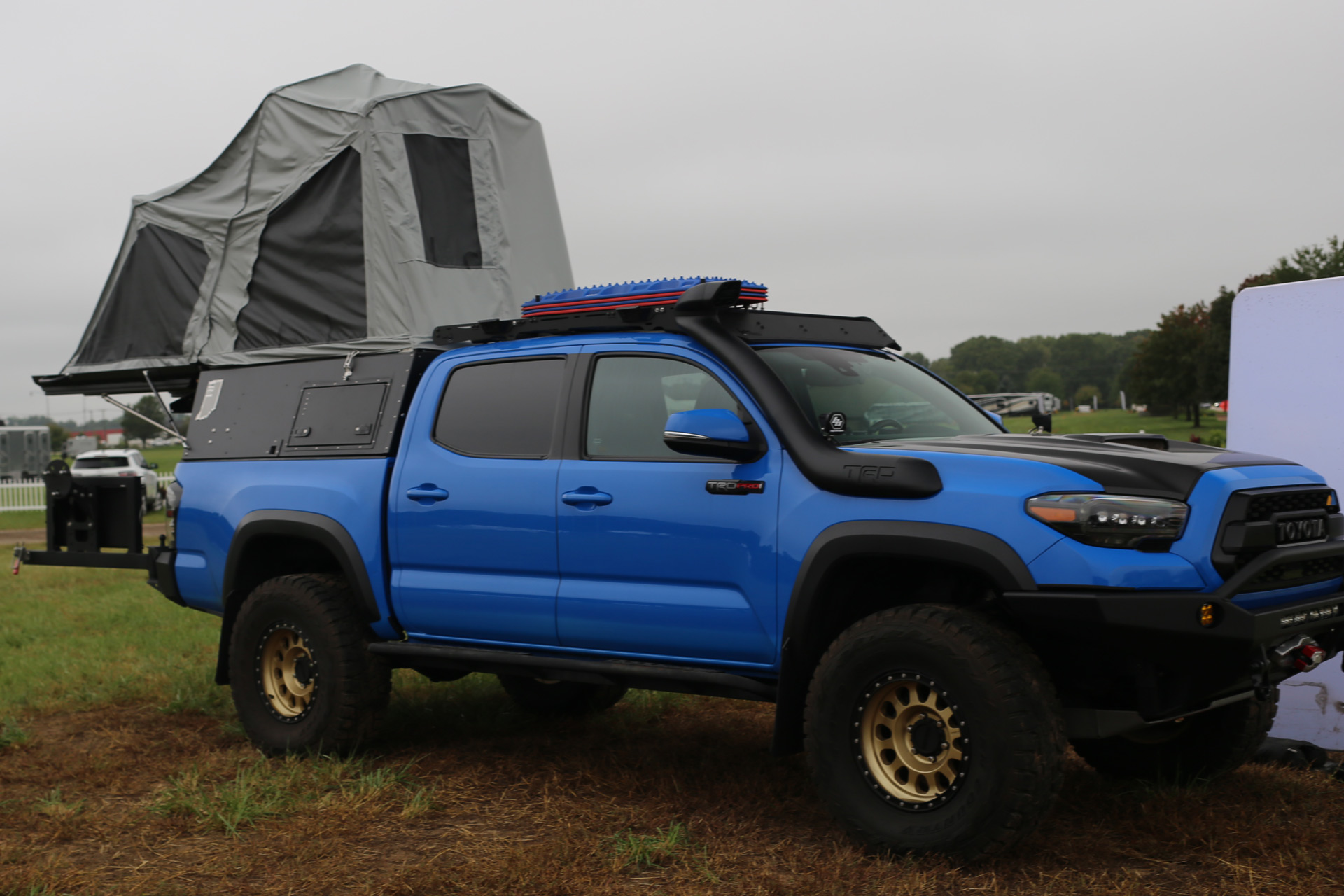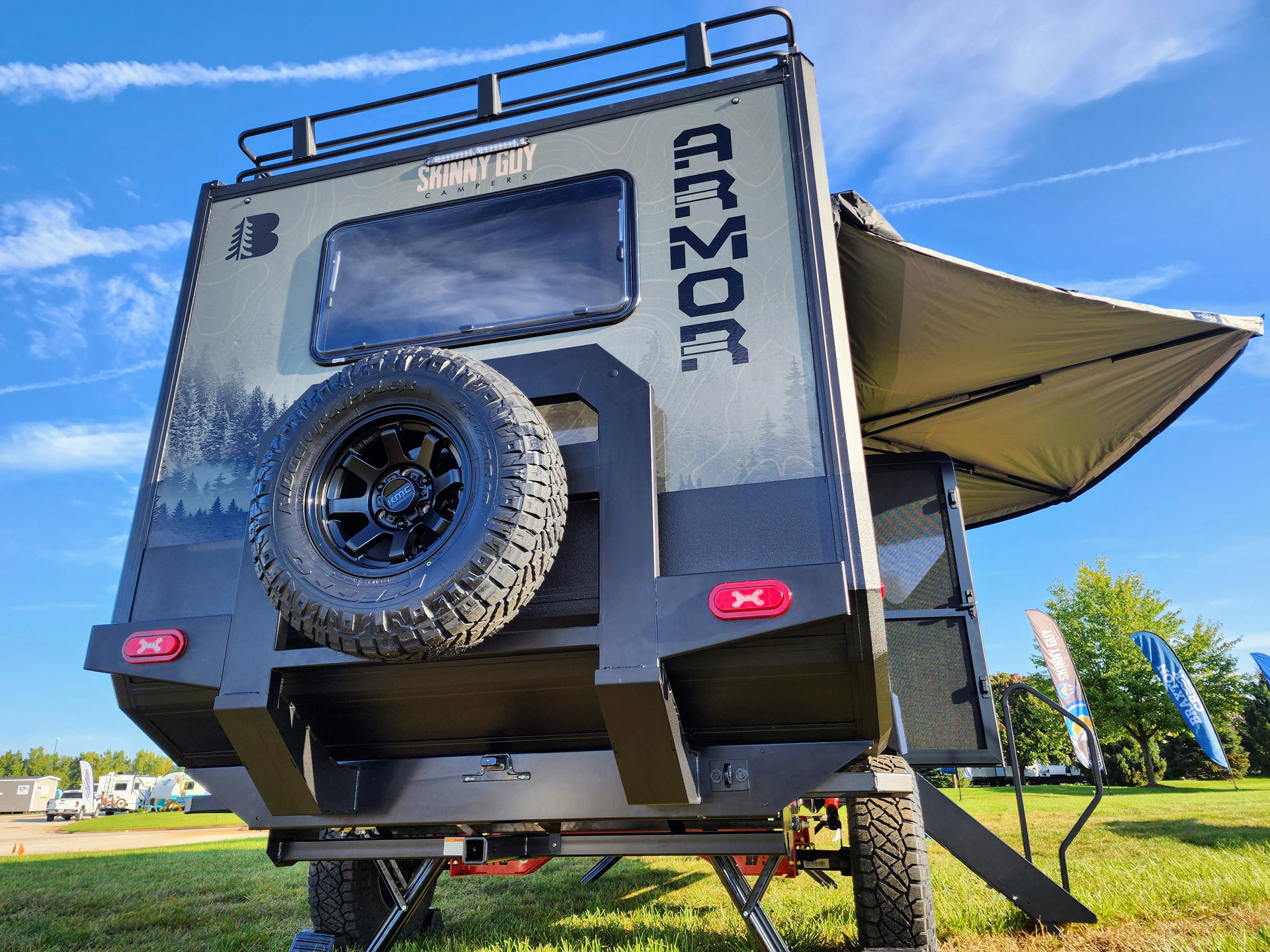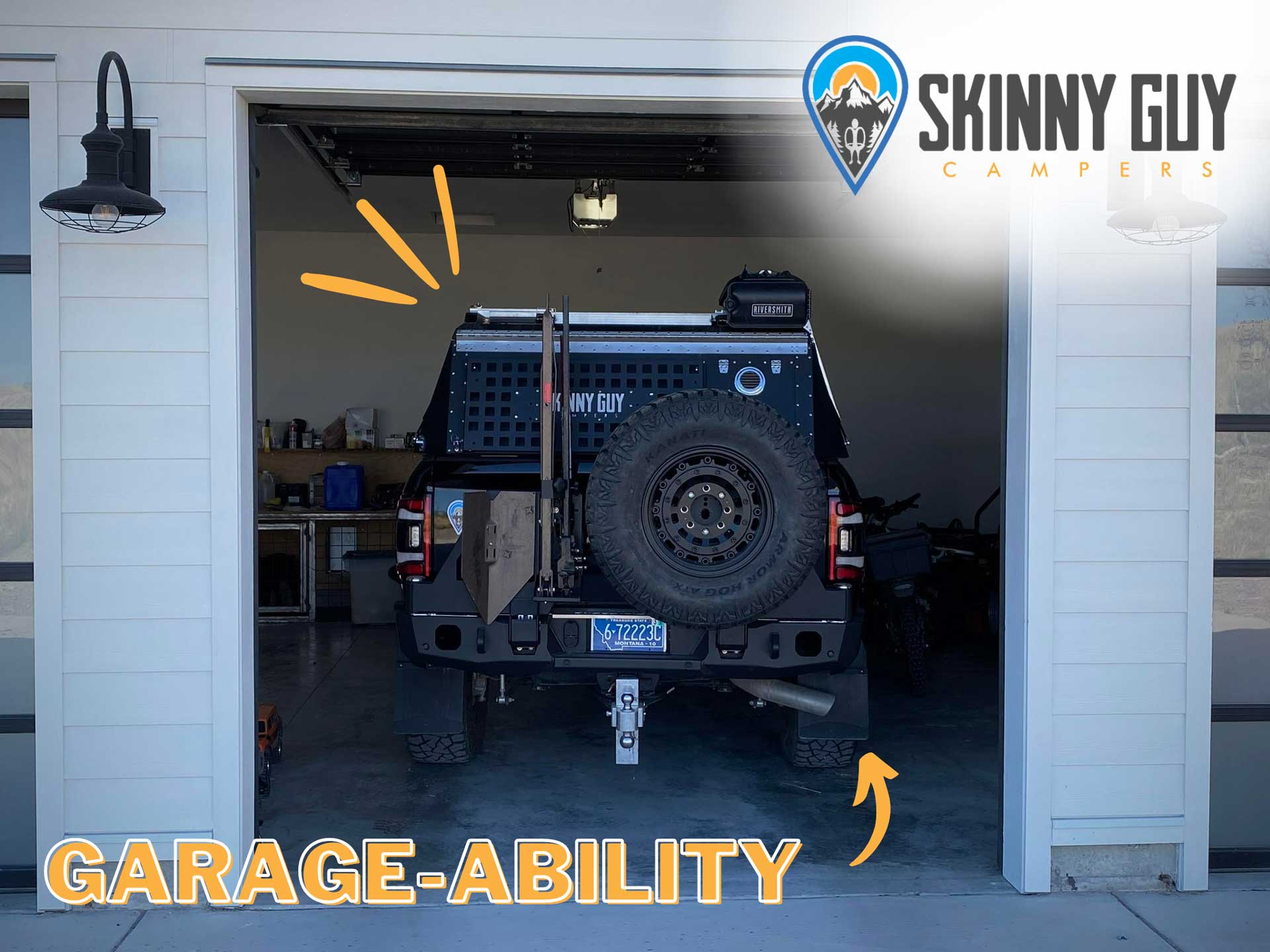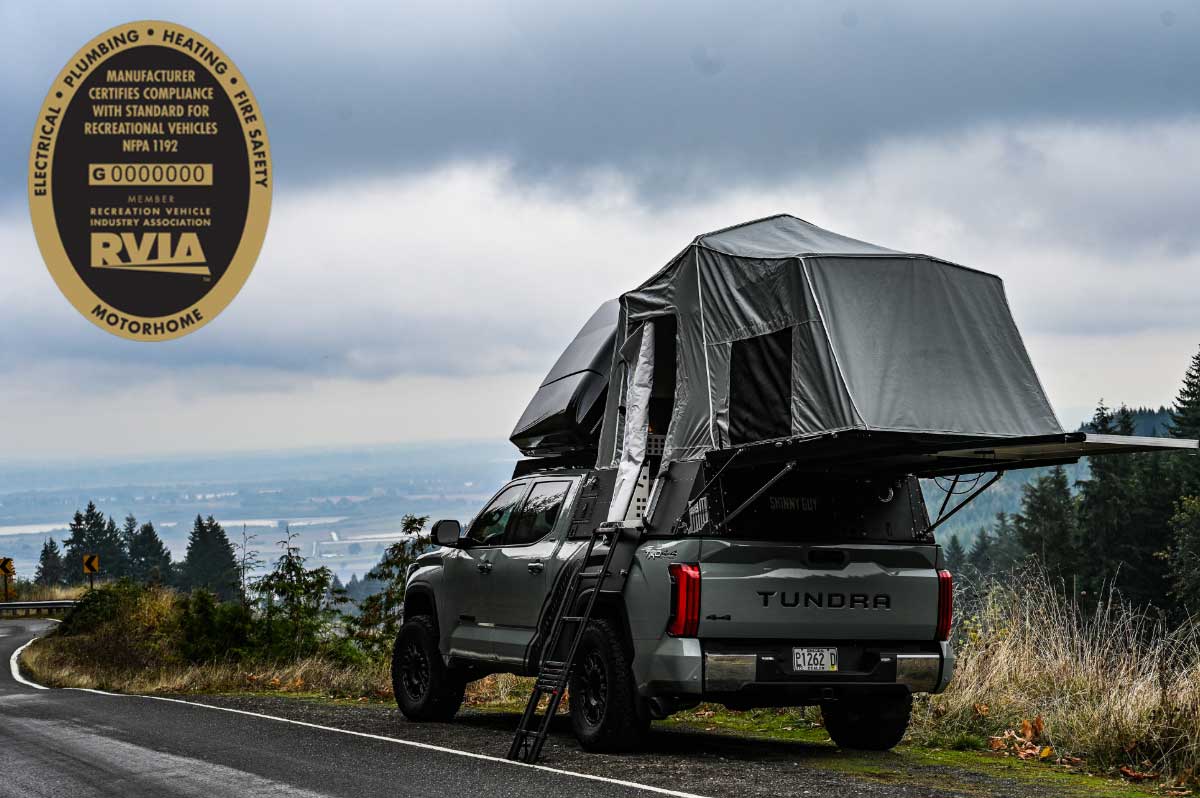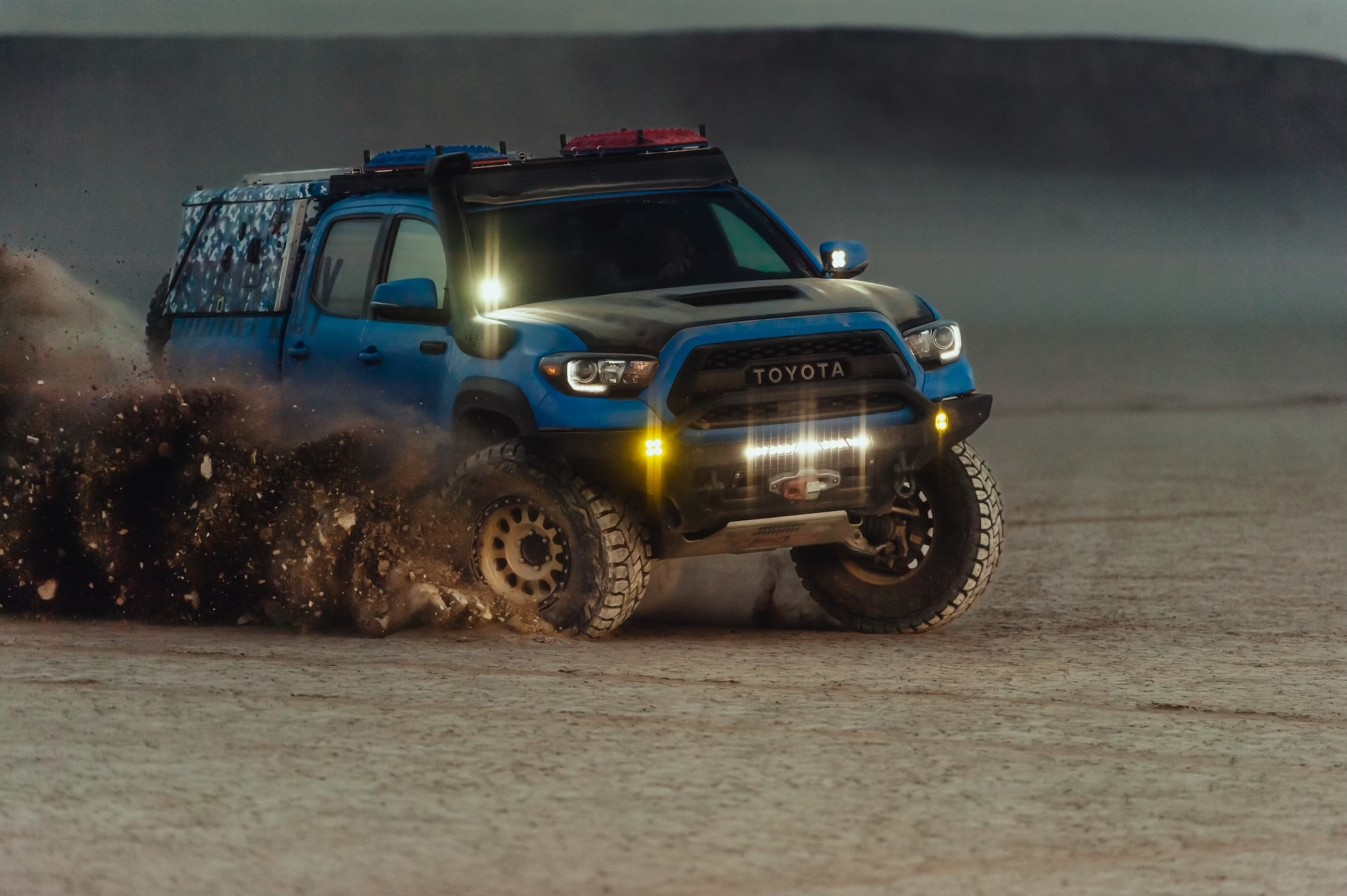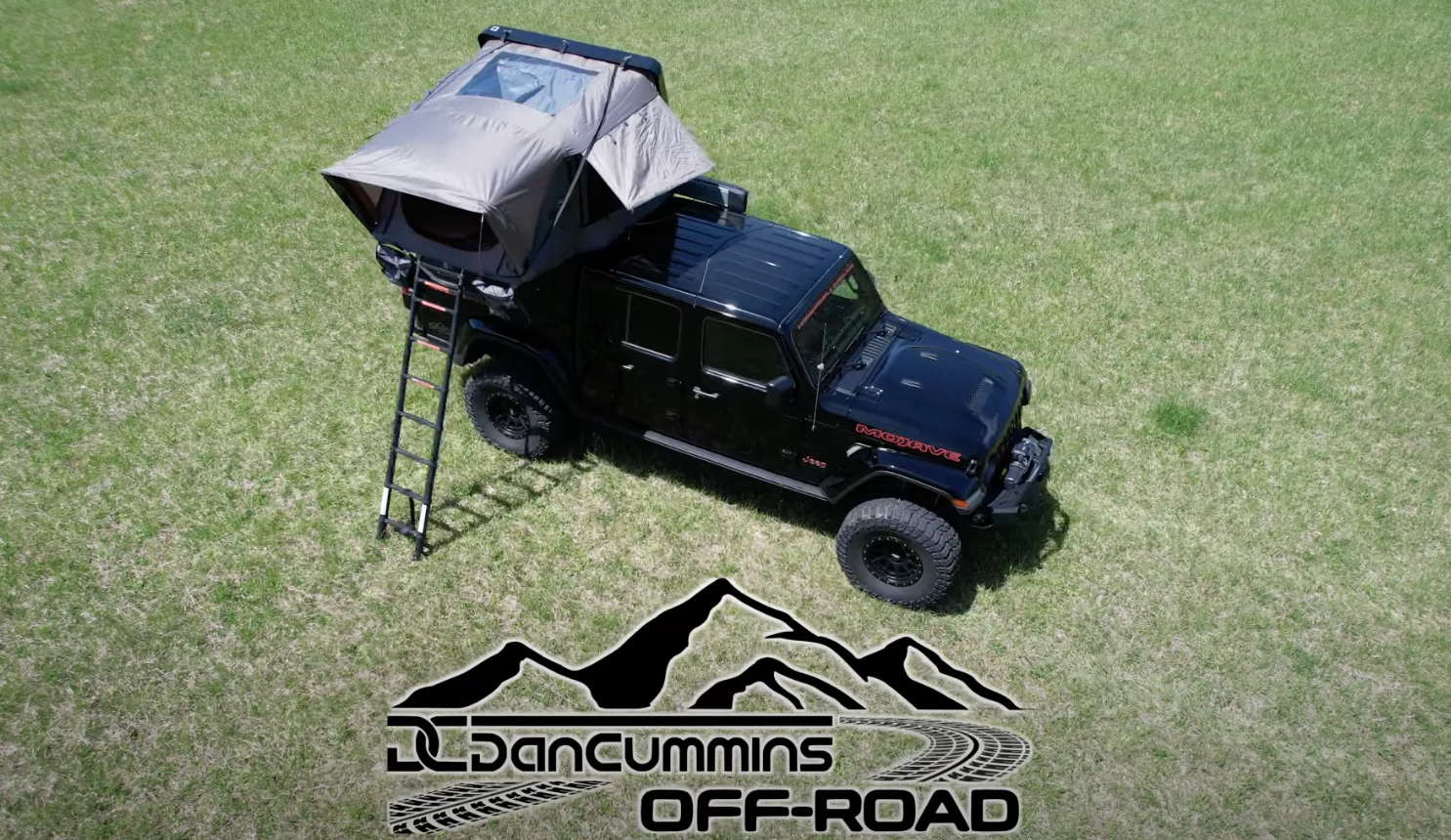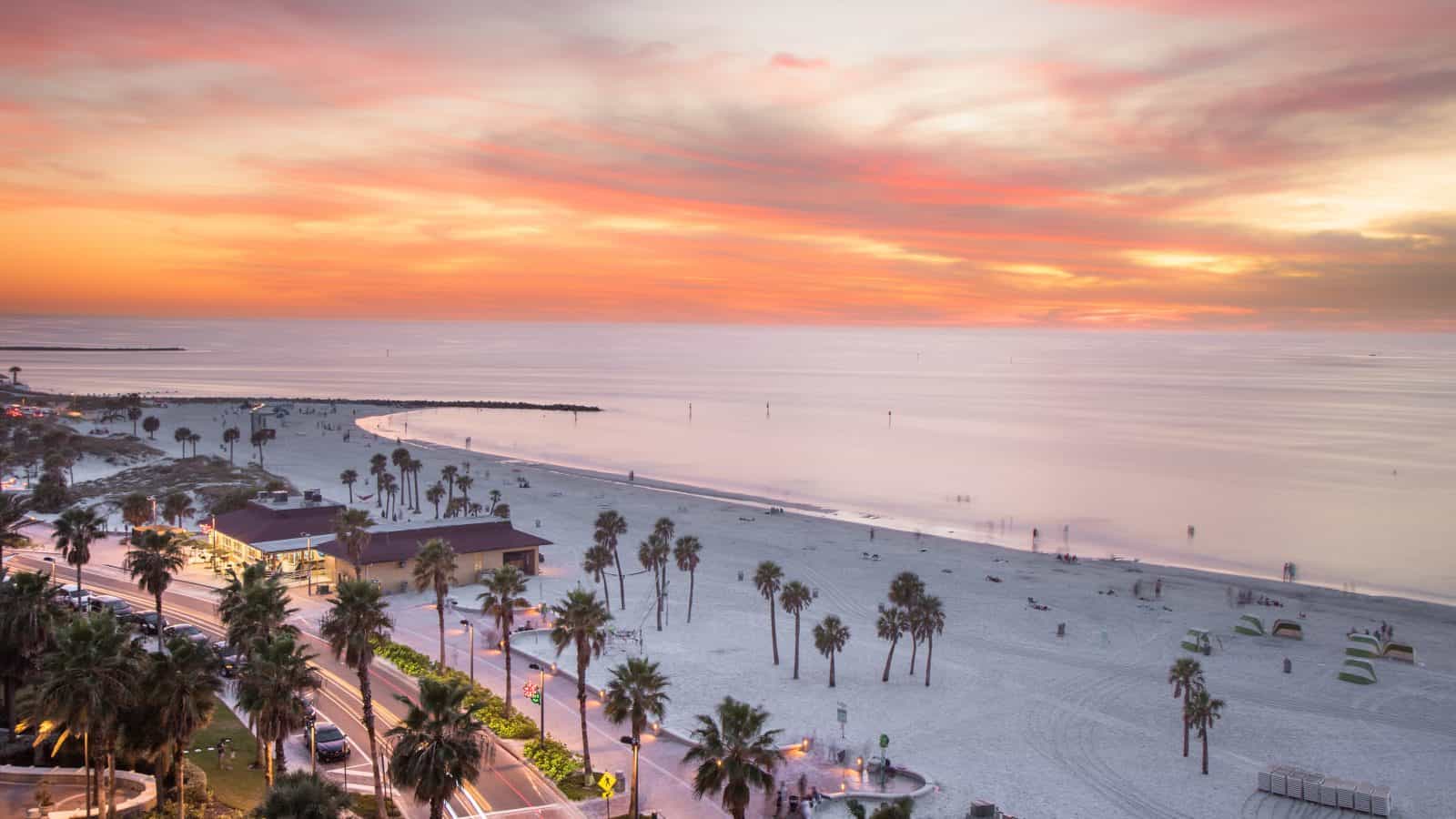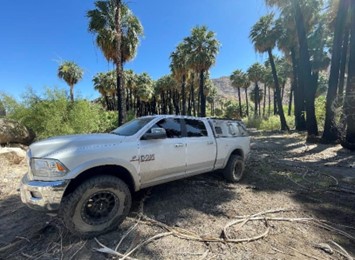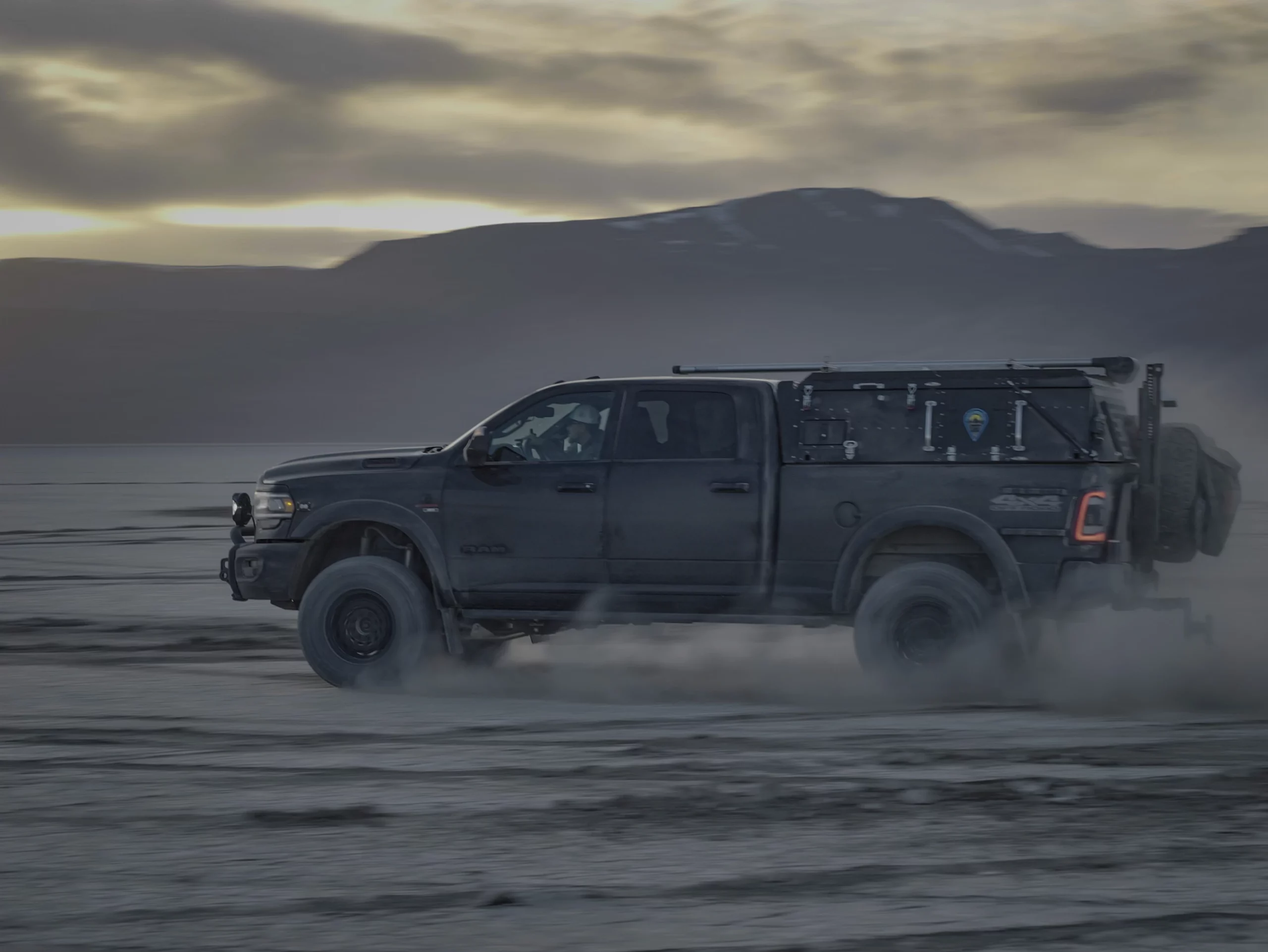The convoy arrived at a semi-run-down convenient store on the East side of Christmas Valley. We all took turns topping off fuel, then grabbed a few snacks for the road. The cloudless sky gave us full mid-day sun, which meant the temperature was rising. It was pretty pleasant as long as we stood in the rays. We returned to our rigs, lined up, did a radio check, then followed Jeff East on the same blacktop we came in on. We ran this asphalt for 15-20 miles before turning South onto a BLM two-track. Evan and Dakota stepped out of the vehicles, assumably discussed film strategies then launched the drones.
Filming commenced over the next few miles. The voice over the GMRS radio instructed the convoy to keep it tight. This was semi-difficult due to the excessive dust the rigs were kicking up. It was just SUPER dusty! I hoped that as we gained altitude, these conditions would subside, but no such luck.

We learned that this was the trail to the A-6 Intruder crash site. The A-6 was a low-level Naval bomber used to drop high amounts of ordinance from low altitudes. in 1973, on a night training mission from Whidbey Island, WA, to the Boardman Bombing Range near Klamath Falls, the A-6 crashed in the high desert near Christmas Valley.
Jason and I followed eagerly along, occasionally stopping for the various shots being set up by the producers. The first few miles were mostly innocuous, just dusty. But as we drove deeper, we gained altitude, and the terrain began to reveal more vistas of large rock outcroppings and expansive sage-covered desert. The track became a bit rockier as we neared a sizeable natural ridge. The trail led us to the base of a steep rocky ascent. Here we got out, chit-chatted about our strategies, aired down our tires, and watched as Evan and Dakota packed gear up the face to set up for action.

First up was Jeff in his loaded-up power wagon. In 4 low lockers engaged, Jeff made short work of the rocky incline. Next up was Gene in his Audi Allroad. Genes Audi has undergone extensive modifications for occasions such as this. Gene picked his way two-thirds of the way up and seemed like he would make it all the way with no trouble. Then the trail’s deep ruts and loose boulders forced the Audi onto 3 wheels losing all traction and momentum. After several minutes and attempts, Gene could not re-create enough momentum to overcome this steep section. He backed down to the bottom to make way for the rest of us. I was up next. The hill presented no problem for the SGC-equipped Ram or Jason’s Tacoma. All vehicles, minus the Audi, made it up on the plateau.
The trail up here was extremely rocky. The whole plateau was a large ancient Lava flow, and after a few hundred yards, we parked and walked as the debris field was already in sight. We explored the area finding bits and pieces of the aircraft strewn several hundred yards wide. As we got nearer to the crash, the parts went from small scraps to larger chunks until we stood among large mangled sections.



Finally, we reached our destination; the aircraft’s tail section stood above the sea of sage like a monument. There was a small plaque containing information about the incident and the pilots and a twisted-up American flag hanging from the top of the tail. We untangled the flag and re-draped it alongside the tall tail section. The sun was getting low in the sky, so we took some final photos and began the ¾-mile trek back to our rigs.

Off-road lights lit up the trail as we descended the steep hill. I was in the lead and crested the ridge to find Genes Audi stuck and high centered on a large rock the size of a 30-quart Yeti cooler. Not one to give up, Gene had spent the last hour or so attempting to make the climb. We had limited daylight left, so we wasted no time getting to work on the recovery. I used my High-Lift Jack to lift the Audi up off the boulder, and then we stacked loose rocks under the tires high enough to allow Gene to back off and down the face. By this time, it was nearly dark. We made our way back down the dusty track from which we came until settling on a windmill stock tank area for camp. Jason and I did quick work setting up our campers, then proceeded to dinner.


By this point, the dust had permeated our entire existence, and my truck was no longer black but a hue of desert tan. Dust withstanding, everyone was enjoying the beauty of the vast emptiness of our surroundings. The wind had picked up a bit, so I made the fire closer to my rig in an attempt to shield it from the West wind. It was a bit futile. In fact, while I was attending the grill at the back of my Skinny Guy, the wind blew my camp chair into the fire, melting a large hole through the fabric. The crew gathered at the fire for a few stories, then retired as the last of the fire’s flames struggled to stay alive.
In the morning, the sun was bright, and the wind had subsided. We all packed up our kits and headed southeast through the sage prairie. After a few hours of dust roads, we found a dry lake bed and an old military test range.




Jeff informed us that it was common to find .50 cal projectiles in the dried-up silt. We stopped and wandered around the flats, searching for anything of interest. Jason was the first to discover an old .50 call bullet. I found a piece of an old infrared flare.

“This .50 caliber round was stuck in a root ball which must’ve stopped it from going further into the ground many years ago. The root ball was likely below the ground when the bullet hit it many years before. Over time, the wind and rain washed away the earth around it, and the bullet was finally exposed above the surface. Then years later, I came along….” Jason
We continued on around the Playa over to an old desert spring that had been developed with a solar pump to fill a concrete cattle watering tank. The edges of the spring were lined with cattails, but I noticed some small fish in 6-8′ of open water in the middle of the spring. I returned to my rig, tied a small San Juan worm on my fly rod, and then returned to the spring. I dipped the fly into the water, and seconds later, I hooked a small what looked like a Chub of some kind. With a child-like excitement, I hooked several more before we moved on.

